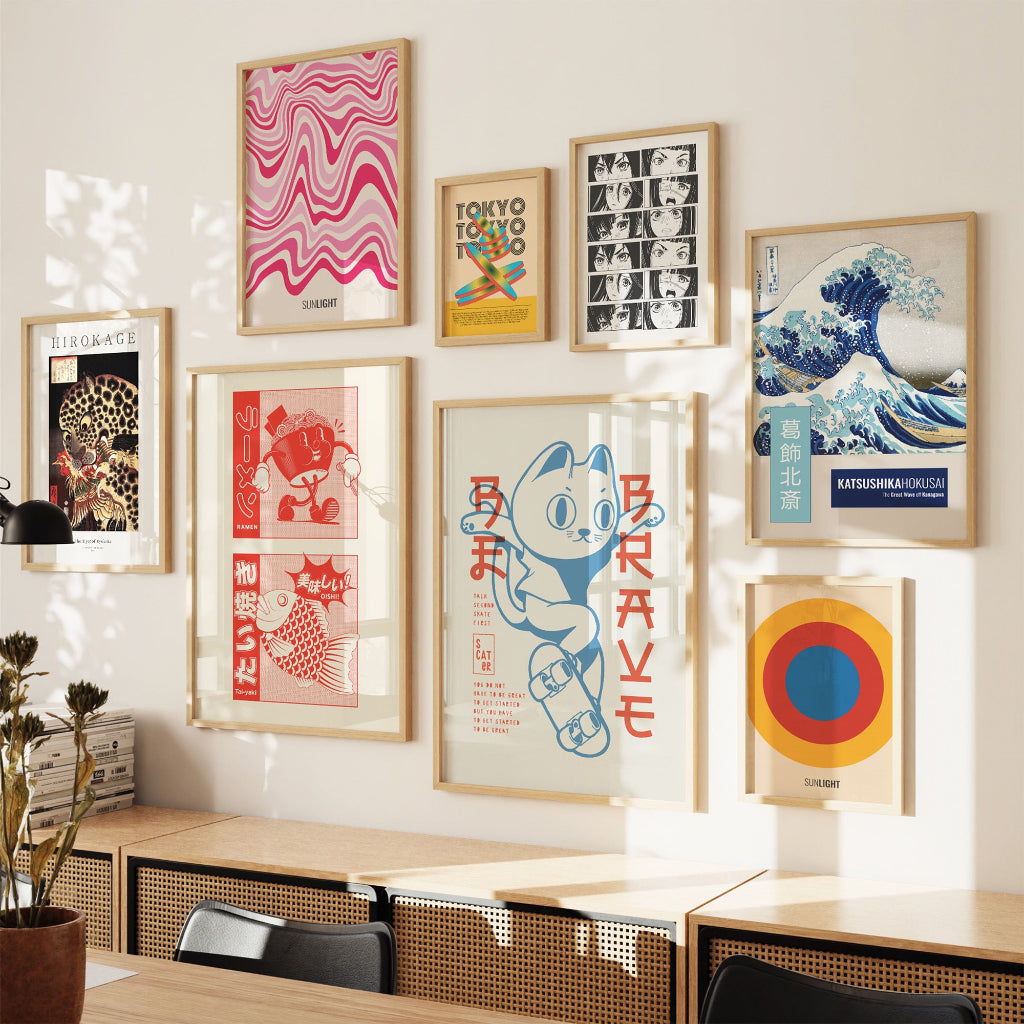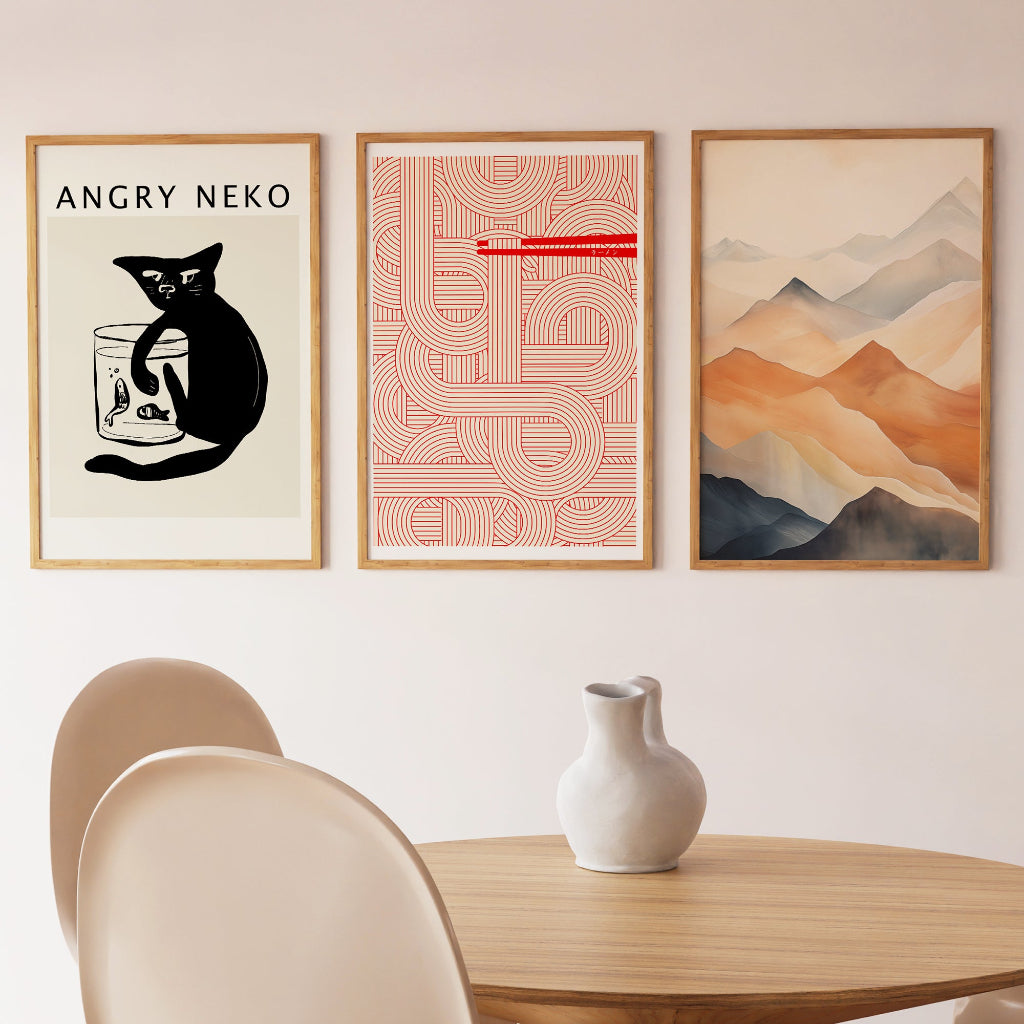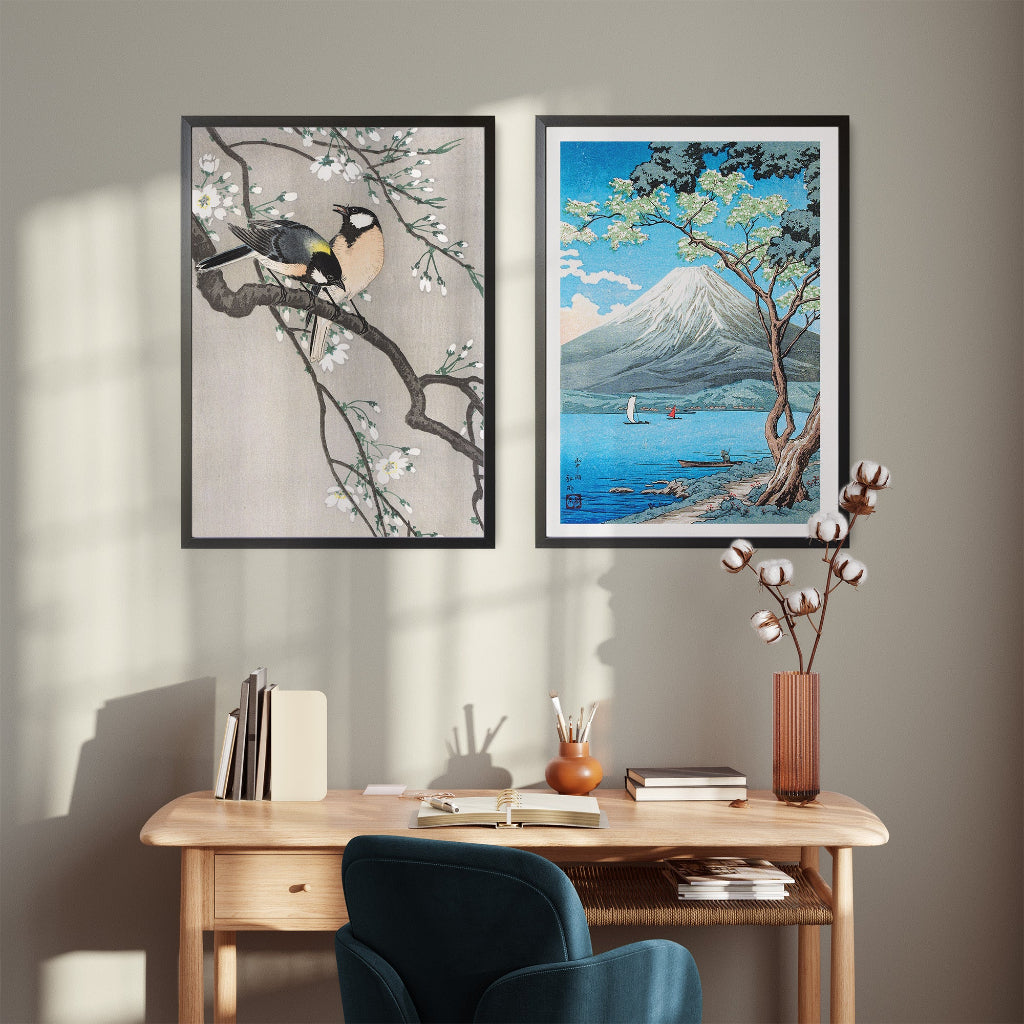

Self portrait as an old man by Katsushika Hokusai | Portrait about Katsushika Hokusai by Keisai Eisen
Katsushika Hokusai (1760–1849) is arguably Japan's most famous artist, an Ukiyo-e painter and printmaker of the Edo period, whose influence extended globally, significantly impacting Western Impressionist artists.
Born in Edo (now Tokyo), Hokusai's life was long and incredibly productive, and he famously changed his art name (gō) numerous times – over 30 in fact – with each name often marking a new artistic period or focus. He began his artistic journey as a teenager, apprenticing with a woodblock carver before joining the studio of Katsukawa Shunshō, a leading Ukiyo-e artist known for actor prints. However, Hokusai's interests were far broader than those of his master.
He explored various styles, studied European copperplate engravings which influenced his perspective techniques, and eventually left the Katsukawa school to pursue his own artistic path. Hokusai's body of work is astoundingly diverse, encompassing book illustrati . . . Read More >>


Self portrait as an old man by Katsushika Hokusai | Portrait about Katsushika Hokusai by Keisai Eisen
Katsushika Hokusai (1760–1849) is arguably Japan's most famous artist, an Ukiyo-e painter and printmaker of the Edo period, whose influence extended globally, significantly impacting Western Impressionist artists.
Born in Edo (now Tokyo), Hokusai's life was long and incredibly productive, and he famously changed his art name (gō) numerous times – over 30 in fact – with each name often marking a new artistic period or focus. He began his artistic journey as a teenager, apprenticing with a woodblock carver before joining the studio of Katsukawa Shunshō, a leading Ukiyo-e artist known for actor prints. However, Hokusai's interests were far broader than those of his master.
He explored various styles, studied European copperplate engravings which influenced his perspective techniques, and eventually left the Katsukawa school to pursue his own artistic path. Hokusai's body of work is astoundingly diverse, encompassing book illustrations, privately commissioned prints (surimono), paintings, and, most famously, woodblock print series. He depicted landscapes, beautiful women (bijin-ga), scenes from daily life, nature studies (birds, flowers, animals), and mythological and historical subjects.
His most iconic work is the series 'Thirty-six Views of Mount Fuji' (Fugaku Sanjūrokkei), created in the early 1830s. This series, which actually contains 46 prints, includes the world-renowned 'The Great Wave off Kanagawa' and 'Fine Wind, Clear Morning' (Red Fuji). These prints revolutionized landscape art in Ukiyo-e, showcasing Mount Fuji from various locations and in different seasons, often with dynamic compositions and a human element.
He was a contemporary of artists like Utamaro and Hiroshige, though his approach was distinct. While Utamaro focused on idealized female beauty and Hiroshige on poetic, atmospheric landscapes, Hokusai was known for his bold designs, innovative perspectives, and often dramatic or even humorous portrayals. He was a relentless innovator, constantly experimenting with new techniques and subjects. His 'Hokusai Manga', a collection of thousands of sketches of everyday objects, people, animals, and mythical creatures, served as a drawing manual and remains a testament to his keen observation and boundless creativity.
Hokusai referred to himself as 'Gakyō Rōjin' (Old Man Mad About Painting) in his later years, reflecting his lifelong dedication to his art. He believed that only in his nineties and beyond would he truly master his craft. His influence on Western art, known as Japonisme, was profound, with artists like Monet, Degas, and Van Gogh drawing inspiration from his compositions and use of color.
Hokusai's legacy is that of a versatile and endlessly inventive master who pushed the boundaries of Ukiyo-e and created some of the most enduring images in global art history.
If you want to know more about the artist: Hokusai - Wikipedia
<< Read Less



























































